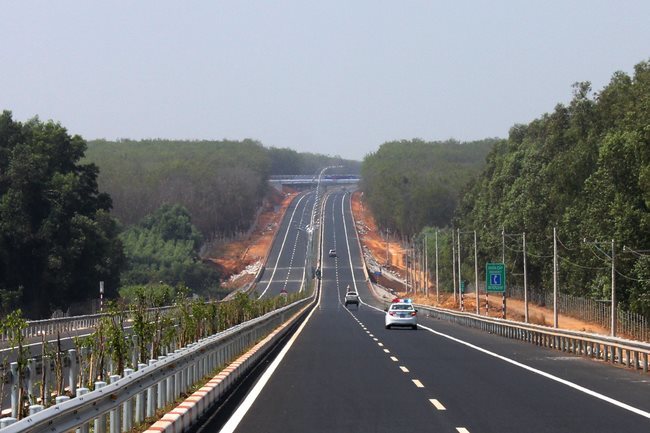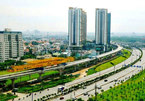 |
|
Vehicles travel on a section of the 55-kilometer-long HCMC-Long Thanh-Dau Giay expressway, which connects HCMC and neighboring Dong Nai Province. Vietnam is projected to need US$110 billion in infrastructure investment–
|
The Cabinet leader told the Ministry of Planning and Investment, the Ministry of Finance and the Ministry of Transport to consider what Donald Lambert, a principal private sector development specialist at the bank’s Southeast Asia Department, had discussed regarding the country's infrastructure development needs between 2021 and 2025.
In his blog, covered by the Saigon Times and other local media outlets, Lambert cited historical trends as indicating that the US$110-billion figure could leave a projected US$22 billion funding shortfall.
“US$22 billion over five years is a big number. But it is not insurmountable. In fact, Vietnam is in a better position than many,” the expert wrote.
While the Philippines, India and other Asian countries have privately funded a large portion of their infrastructure, the private sector has historically only funded 10% of Vietnam’s, he added.
“That means there is a lot of scope for Vietnam, particularly given its compelling growth story, to attract more infrastructure investment,” he said.
To make this happen, he suggested the Government pursue three strategies to boost its economic growth in the years to come.
The first strategy is a more catalytic use of official development assistance (ODA) to attract private investment.
In 2015, the country was the fifth largest recipient of net ODA and qualified for a significant amount of concessional assistance from the ADB and other donors.
The country’s per capita income has been increasing at a compound annual growth rate of over 6%, making it one of the fastest growing economies in the world. “It is now firmly established as a middle-income country and is one of the most attractive destinations for foreign direct investment,” he stated.
Therefore, donors have gradually allocated grants and other forms of deeply concessional assistance to countries with more pressing needs. In 2017, Vietnam graduated from the World Bank’s concessional country classification and, 18 months later, from the ADB’s equivalent grouping.
The second strategy is to pass a strong law on public-private partnerships. The law needs to better mitigate the risk that the demand for an infrastructure project will fall short of projections, according to Lampert.
Meanwhile, the final strategic priority is the improved mobilization of domestic capital markets.
Lambert noted that the passage of the new Securities Law in November 2019 was a positive step as are recent regulatory changes that encourage companies to turn to the bond market instead of banks to fund long-term obligations.
However, private pension funds, investment funds and insurance companies all need to mature so there is a strong base of demand for corporate bonds. SGT
Pham Nhat

Ha Long City to spend $107m on transport infrastructure
Ha Long City of the northern coastal province of Quang Ninh plans to spend more than VND2.5 trillion (US$107 million) on transport infrastructure this year.

HCM City hopes investment in infrastructure will foster economic growth
HCM City authorities have identified urban infrastructure development as the key factor in meeting the city’s economic targets in 2020-25.
 An ADB expert's projection that Vietnam will need to invest US$110 billion in infrastructure development between 2021 and 2025 has led PM Nguyen Xuan Phuc to order relevant ministries to look into it in earnest.
An ADB expert's projection that Vietnam will need to invest US$110 billion in infrastructure development between 2021 and 2025 has led PM Nguyen Xuan Phuc to order relevant ministries to look into it in earnest.